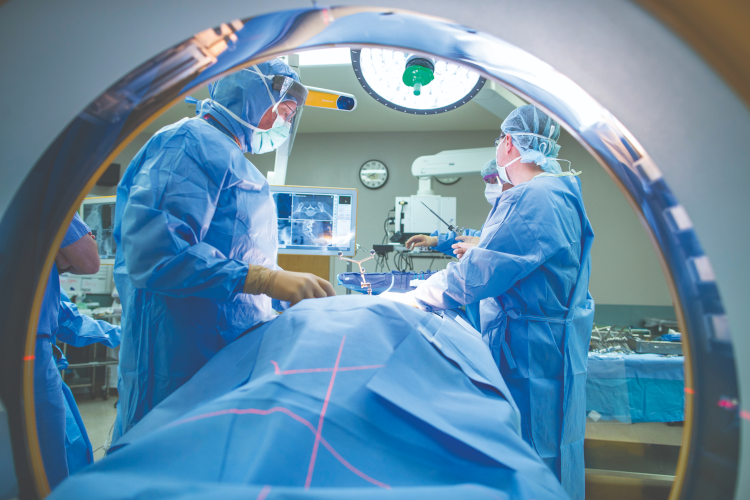What Is Liver Cancer?
Adult primary liver cancer is a disease in which malignant (cancer) cells form in the tissues of the liver. The two types of adult primary liver cancer are:
- Hepatocellular carcinoma (most common)
- Cholangiocarcinoma (bile duct cancer)
Risk Factors
- Having hepatitis B or hepatitis C infection. Having both hepatitis Band hepatitis C increases the risk even more
- Having cirrhosis
- Heavy alcohol use. Heavy alcohol use and having hepatitis B infection increases the risk even more
- Eating foods tainted with aflatoxin (poison from a fungus that can grow on foods such as grains and nuts that have not been stored properly)
- Having nonalcoholic steatohepatitis (NASH) which is a condition in which fat builds up in the liver and may progress to inflammation of the liver and liver cell damage
- Using tobacco such as cigarette smoking
Risk factors also include having the following inherited or rare disorders that damage the liver:
- Hereditary hemochromatosis is an inherited disorder in which the body stores more iron than it needs. The extra iron is mostly stored in the liver, heart, pancreas, skin, and joints.
- Alpha 1 antitrypsin deficiency is an inherited disorder that can cause liver and lung disease.
- Glycogen storage disease is an inherited disorder in which there are problems with how a form of glucose (sugar) called glycogen is stored and used in the body.
- Porphyria cutanea tarda is a rare disorder that affects the skin and causes painful blisters on parts of the body that are exposed to the sun, such as the hands, arms, and face. Liver problems can also occur.
- Wilson disease is a rare inherited disorder in which the body stores more copper than it needs. The extra copper is stored in the liver, brain, eyes, and other organs.
Signs and Symptoms
- A hard lump on the right side just below the rib cage
- Discomfort in the upper abdomen on the right side
- A swollen abdomen
- Pain near the right shoulder blade or in the back
- Jaundice (yellowing of the skin and whites of the eyes)
- Easy bruising or bleeding
- Unusual tiredness or weakness
- Nausea and vomiting
- Loss of appetite or feelings of fullness after eating a small meal
- Weight loss for no known reason
- Pale, chalky bowel movements and dark urine
- Fever
Testing
Erlanger providers may use one or a combination of the following tests.
- Physical exam and health history: An exam of the body to check general signs of health including checking for signs of disease such as lumps or anything else that seems unusual.
- Serum tumor marker test: A procedure in which a sample of blood is examined to measure the amounts of certain substances released into the blood by organs, tissues, or tumor cells in the body.
- Liver function tests: A procedure in which a blood sample is checked to measure the amounts of certain substances released into the blood by the liver. A higher than normal amount of a substance can be a sign of liver cancer.
- CT scan (CAT scan): A procedure that makes a series of detailed pictures of areas inside the body such as the abdomen taken from different angles.
- MRI (magnetic resonance imaging): A procedure that uses a magnet, radio waves, and a computer to make a series of detailed pictures of areas inside the body such as the liver.
- Ultrasound exam: A procedure in which high energy sound waves (ultrasound) are bounced off internal tissues or organs and make echoes.
- Biopsy: The removal of cells or tissues, so they can be viewed under a microscope by a pathologist to check for signs of cancer.
Prognosis Factors
- The stage of the cancer (the size of the tumor, whether it affects part or all of the liver, or has spread to other places in the body)
- How well the liver is working
- The patient's general health including whether there is cirrhosis of the liver
Treatment Options
Eight types of standard treatment are used, often in combination depending on the patient's unique situation and needs:
- Surveillance - Surveillance is for lesions smaller than one centimeter found during screening. Follow up every three months is common.
- Surgery - A partial hepatectomy (surgery to remove the part of the liver where cancer is found) may be done.
- Liver transplant - The entire liver is removed and replaced with a healthy donated liver.
- Ablation therapy - Removing or destroying cancerous tissue by high-energy radio waves, microwaves, ethanol, freezing, or electrical pulses.
- Embolization therapy - Using substances to block or decrease the flow of blood through the hepatic artery to the tumor.
- Targeted therapy - Using drugs or other substances to identify and attack specific cancer cells without harming normal cells.
- Immunotherapy - Using substances made by the body or made in a laboratory are used to boost, direct, or restore the body's natural defenses against cancer.
- Radiation therapy - Directing high energy X-rays or other types of radiation to kill cancer cells or keep them from growing.
Experts who Treat Liver Cancer
The patient's treatment will be overseen by a medical oncologist, a doctor who specializes in treating people with cancer. The medical oncologist may refer the patient to other health professionals who have special training in treating patients with liver cancer. These may include the following specialists:
- Hepatologist (specialist in liver disease)
- Surgical oncologist
- Transplant surgeon
- Radiation oncologist
- lnterventional radiologist (a specialist who diagnoses and treats diseases using imaging and the smallest incisions possible)
- Pathologist
Clinical Trials
Our experts are testing new types of treatments in clinical trials, research studies meant to help improve current treatments or obtain information on new treatments for patients with cancer. Patients may want to consider participating. You can enter clinical trials before, during, or after starting their cancer treatment.
Download our brochure for more comprehensive information about this condition.
This content was last medically reviewed in May 2022 by Sharlotte Manley, MSN, FNP, Erlanger Gastroenterology.




